Learning how to save money on food doesn’t have to be hard. Save money on produce with over 30 tips and tricks to help you spend less and eat well!
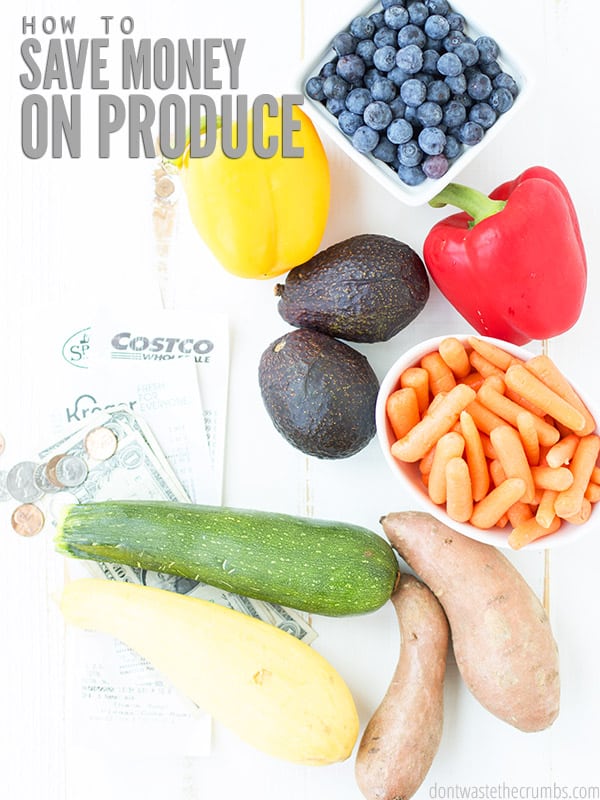
There’s a myth that eating healthy food is expensive. It’s true that if you walk into a fancy grocery shop and buy whatever suits your mood at the time, you’ll likely spend more money.
However, there are PLENTY of ways you can save money on food, especially on produce.
Here are my proven strategies, and the best ways how to save money on produce.
HOW TO SAVE MONEY ON PRODUCE
HOW TO SAVE MONEY ON FOOD BEFORE YOU SHOP
1. MEAL PLAN!
Never buy anything unless you’ve made a meal plan, first. Here’s my simple method for making a meal plan. Use that meal plan to make your grocery list and stick to it! Impulse buying will easily put you over budget.
Besides, impulse purchases on produce will likely mean you will end up wasting food. With no plan for the produce, it may sit and go bad.
Remember to check your inventory as you meal plan so that you don’t forget about produce already in your fridge.
2. KEEP A PRICE BOOK.
Tracking the price of produce over time means never second-guessing whether something is a good deal or not. You’ll know right away if an item is too expensive, or if you should buy extras!
You can read how to create a price book here.
HOW TO SAVE MONEY WITH FOOD WHILE SHOPPING
3. SHOP DISCOUNT STORES.
Discount stores like ALDI, Grocery Outlet, Lidl, or the 99¢ carry produce – sometimes organic – for a much lower price than regular grocery stores. Not every store has a good selection, but it’s worth a quick stop to see if your local store is worth a weekly trip!
4. SHOP ETHNIC STORES.
Asian stores will have great deals on produce commonly used in Asian dishes, while Mexican stores will have great deals on produce commonly used in Mexican dishes. I once went to a local Asian store and found a banker’s box of bananas – at least 30lbs – for $5!
5. SHOP IN BULK, IF IT MAKES SENSE.
Costco, BJ’s, and Sam’s Club often have good deals on produce, but it only makes sense if you can eat it before it goes bad. Buy bulk produce that lasts a long time, like potatoes, carrots, and onions. Larger families can do the same, but also buy produce that goes bad quickly, like bananas, avocados, and spinach, if you’ll be able to use it in time.
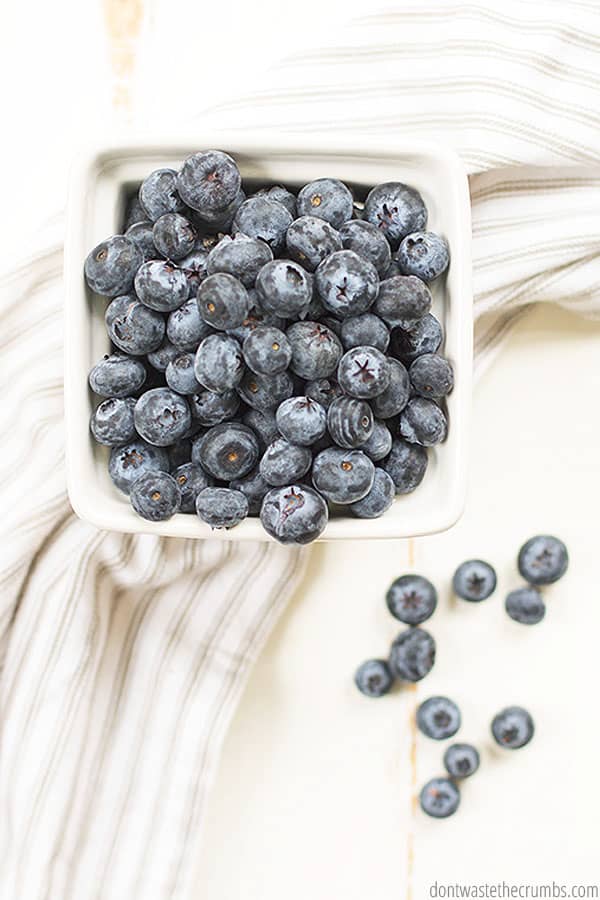
6. SHOP WHAT’S ON SALE.
You’ve probably heard this one before, but you always want to shop the sales. I aim for $1/lb for conventional produce and $2/lb for organic. Make sure you keep a price book to know for sure whether or not something is a good deal, and when it is, plan your meals around that item!
Keep an eye on rewards and loyalty programs when shopping the sales. Some stores will give special discounts to cardholders.
7. SHOP SEASONALLY.
Produce that’s in season is abundant, and prices are lower when there’s a lot available. If you’re not sure what’s in season, you can check out our monthly produce guides on this page.
8. SHOP THE CLEARANCE SECTION.
Not all stores have them, but if your store has a clearance produce section, pay attention! You can find great deals on a variety of items that need to go ASAP. Just a heads up, these foods might be bruised, ugly, or overripe, so be prepared to do something with them soon after you get home.
9. DON’T OVERBUY.
Buy just enough for your meal plan and try to shop with blinders so you’re not tempted to buy things just because they look good. Make sure you have a plan to use all of the produce item, so it doesn’t get forgotten in the refrigerator!
10. PAY ATTENTION TO PRICING.
Some items that are sold per bag (like grapes) are actually priced per pound. So, you may think that bag of grapes costs $1.99, but since that bag weighs 3 pounds, you’re paying closer to $6!
11. COMPARE UNIT PRICING.
Produce is sold either per item, per pound, or per bag. There’s no way to know which is cheapest unless you do the math, so take the time to calculate the price each time you shop. A perfect example is bell peppers. Sometimes it’s cheaper to buy individual peppers than it is to buy the 3-pack!
12. AVOID BUYING WHAT YOU DON’T EAT.
Take broccoli for example. If you don’t eat the stalk, then choose heads of broccoli with as little stalk as possible. The stalk is heavy, so you’ll reduce how much you spend per pound AND reduce food waste at home. (If you need help using broccoli stalks, my Costco-copycat Sweet Kale Salad is delicious!)
13. STOCK UP ON GOOD DEALS.
Take advantage of super low prices, but make sure you have a plan to use the produce. If you have that plan, go ahead and stock up! This might mean a week with several tomato-based meals if tomatoes are on sale, or canning applesauce if you find a good deal on apples.
Whether you eat the item fresh or preserve some for later, it’s only a good deal if it’s a good price AND you have a way to use it.
14. BUY ITEMS THAT LAST LONGER.
Think cabbage, carrots, kale, apples, oranges. This isn’t an exhaustive list, but by buying more items that last longer, you’ll end up throwing less food away because it went bad before you could get to it.
15. BUY FROZEN.
If what you need isn’t on sale or in season, buy the frozen version instead. Make sure to compare against fresh, just in case!
16. WEIGH FIXED-PRICED, BAGGED ITEMS.
A 5lb bag of potatoes may weigh anywhere from 4 lbs to 7 lbs…you want to make sure that you’re getting the heaviest bag you can! I always choose 2-3 bags and put them on the produce scale to see which one has the most weight. Since they’re priced per bag, you might as well get the largest amount for your money!
17. COUNT HOW MANY ARE INSIDE FIXED-PRICED, BAGGED ITEMS.
Apples and bananas are a great example of this. When you eat an apple, you generally eat one, right? If you choose the bags that have more apples inside, you’ll get more servings. Pair this with weighing the bag too, and you’ll score an even better deal.
18. FOR FIXED-PRICE ITEMS, BUY THE LARGEST YOU CAN.
Most times pineapples are sold at a fixed price, like $1.99 each. If this is the case, buy the biggest pineapple (or cauliflower or head of lettuce, etc.) you can!
19. CUT IT UP YOURSELF
Stores will often sell pre-cut fruits and veggies alongside the whole items. Instead of paying extra for the convenience of a pineapple that’s already cut up, take the time to cut it yourself. You’ll get a larger amount of fruit, and you’ll save at least a few dollars.
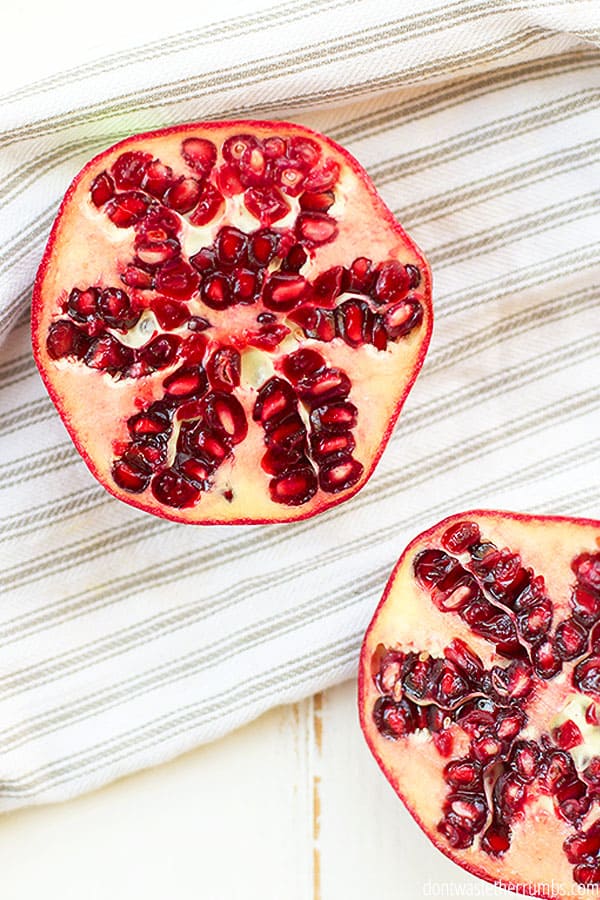
HOW TO SAVE MONEY ON PRODUCE AT HOME
20. STORE YOUR PRODUCE PROPERLY.
Wash berries with all-natural produce wash JUST before eating them and dry them well.
Hearty produce like cabbage and Brussels sprouts can be pushed to the back, while more perishable produce like mushrooms and lettuce should be front and center (so you don’t forget they’re there!).
21. CONSUME THE MOST PERISHABLE PRODUCE ITEMS FIRST.
Mushrooms, cucumbers, lettuce, and yellow squash should be eaten earlier in the week.
Carrots, onions, kale, potatoes, and bell peppers can wait for the end of the week.
22. DON’T MAKE TOO MUCH.
Prepare enough for the meal(s) your family will eat, but don’t make so much that you have days and days’ worth of leftovers, especially if your family doesn’t like repeating meals.
23. HAVE A PLAN FOR LEFTOVERS.
Come up with a way to use leftovers as soon as you know you’ll have them. This can be as simple as lunch for tomorrow, or you can reinvent leftovers into something else (like using leftover pork roast in my Pork and Potato Soup).
24. DO SOMETHING WITH RANDOM BITS AND PIECES.
I like keeping a plastic tub in the fridge for smoothie scraps, and a tub in the freezer for vegetable scraps and bones to make Chicken Stock.
We also often have “kitchen sink” recipes like Fried Rice or Chopped Quinoa Salad where anything in the fridge is fair game and will taste good!
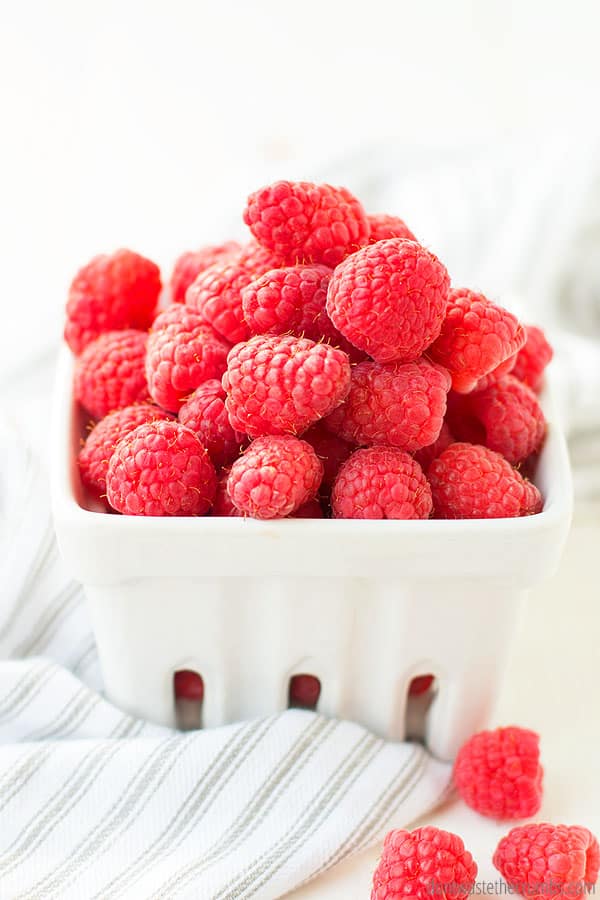
OTHER WAYS TO SAVE ON PRODUCE
25. GROW YOUR OWN.
It’s not hard to grow herbs or even a few tomato plants. Pick just one vegetable that you enjoy eating and try growing it next season.
26. ASK FOR “SECONDS” OR “JAM BERRIES” AT THE FARMERS MARKET.
These are bruised and not as good-looking as the other fruit, but they’re just as good! Use in scones or freeze berries for later on.
27. CONSIDER U-PICK FARMS.
When berries or apples are in season, you can find local produce for as low as 99¢ per pound! Make a plan to use the fruit, whether you eat it fresh, can it, dehydrate it, or freeze it.
28. CONSIDER USING APPS.
Ibotta or Checkout 51 are great grocery rebate apps. You’ll regularly find cash back on specific produce items, as well as other items on your shopping list. Also, check your grocery store apps for digital coupons!
29. DOUBLE DIP ON REBATE APPS.
Most rebate apps require a photo of your receipt, so make sure you double-dip and upload that photo to all the apps you can! A bit of cash back on each app adds up to a whole bunch you can add back to your grocery budget or choose to spend on something else.
30. CONSIDER A PRODUCE DELIVERY SUBSCRIPTION, LIKE IMPERFECT FOODS, MISFIT MARKET, OR HUNGRY HARVEST.
Many of these subscriptions offer deals on excess produce items, as well as some pantry items. Check to make sure the unit price is still a good deal before ordering. Some of the produce subscription boxes include:
- Farmbox Direct
- Imperfect Foods
- Misfits Market
- Hungry Harvest
31. LOOK AT GROUPON FOR DEALS.
I once found a Groupon for $10 off a local shop I’d never been to before. While there, I found some fruit (apricots, peaches, nectarines, plums, etc.) that was priced at $2 per bag – a big brown grocery store shopping bag! It came out to over 13 lbs for $2, and I still had the rest of my Groupon to use!

HOW TO SAVE MONEY ON FOOD
Saving on produce will help lower your grocery budget. To learn even more about how to save on groceries, check out Eating Real Food on a Budget here.
Or check out my FREE Fight Inflation Workshop. You’ll get access to three AMAZING video sessions focused on how to save money on food right now, despite rising grocery costs.
NEED WAYS TO SAVE MONEY ON MEAT?
- 11 Ways to Save Money on Meat at the Store
- 10 Steps to Stretching Meat at Home
- How to Stretch Chicken Into Multiple Meals
- How to Stretch Ground Beef
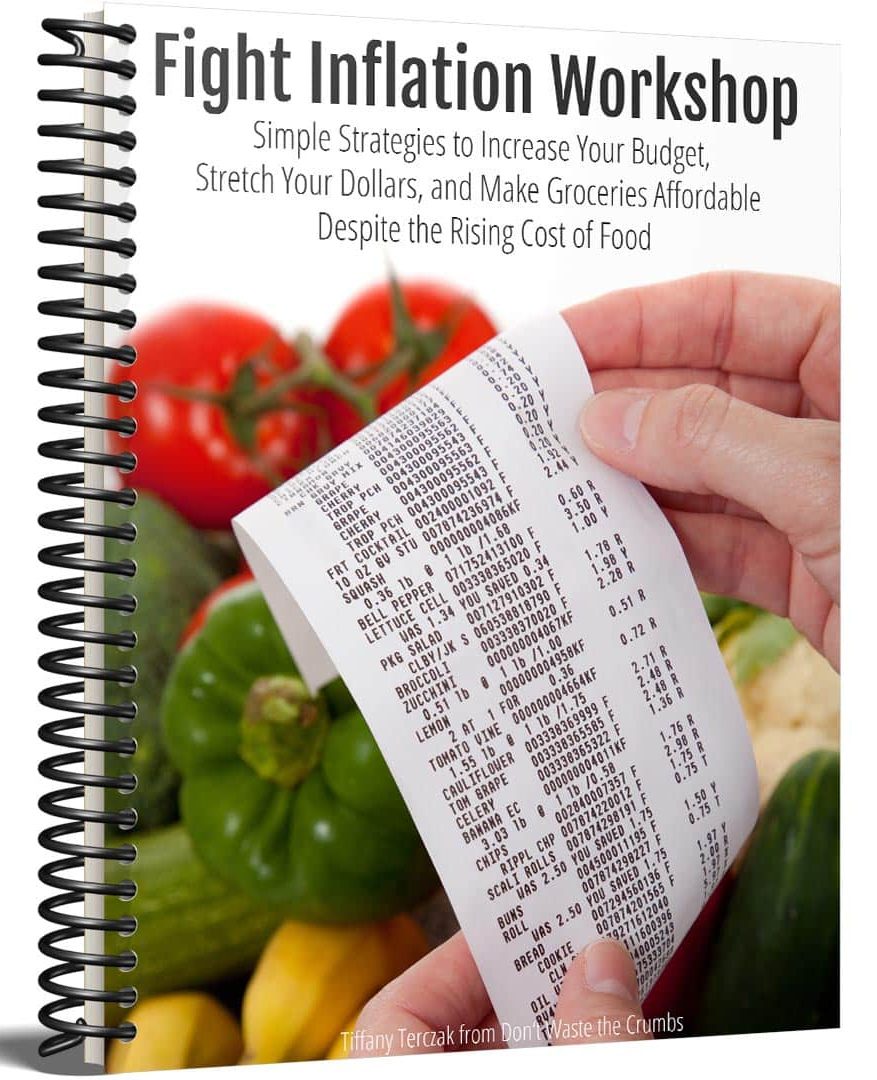

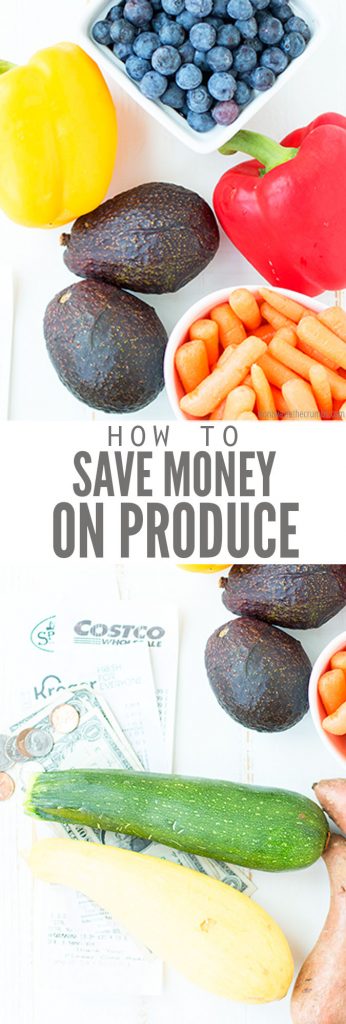
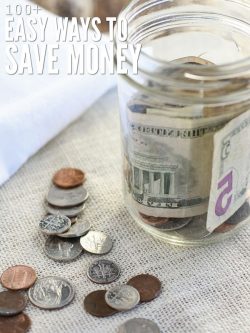
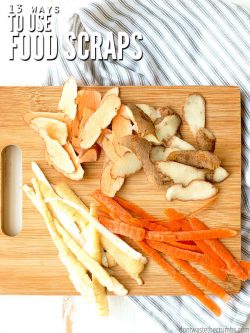

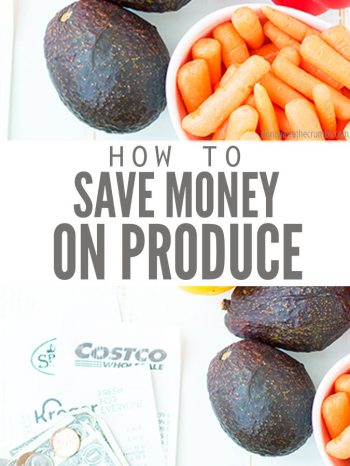
I liked your idea about using Hungry Harvest or imperfect foods, I never thought that would be good for us. I am going to look up their information and check them out. Thanks again.
Hi Diana,
Of course. Let us know how it goes if you try them! 🙂